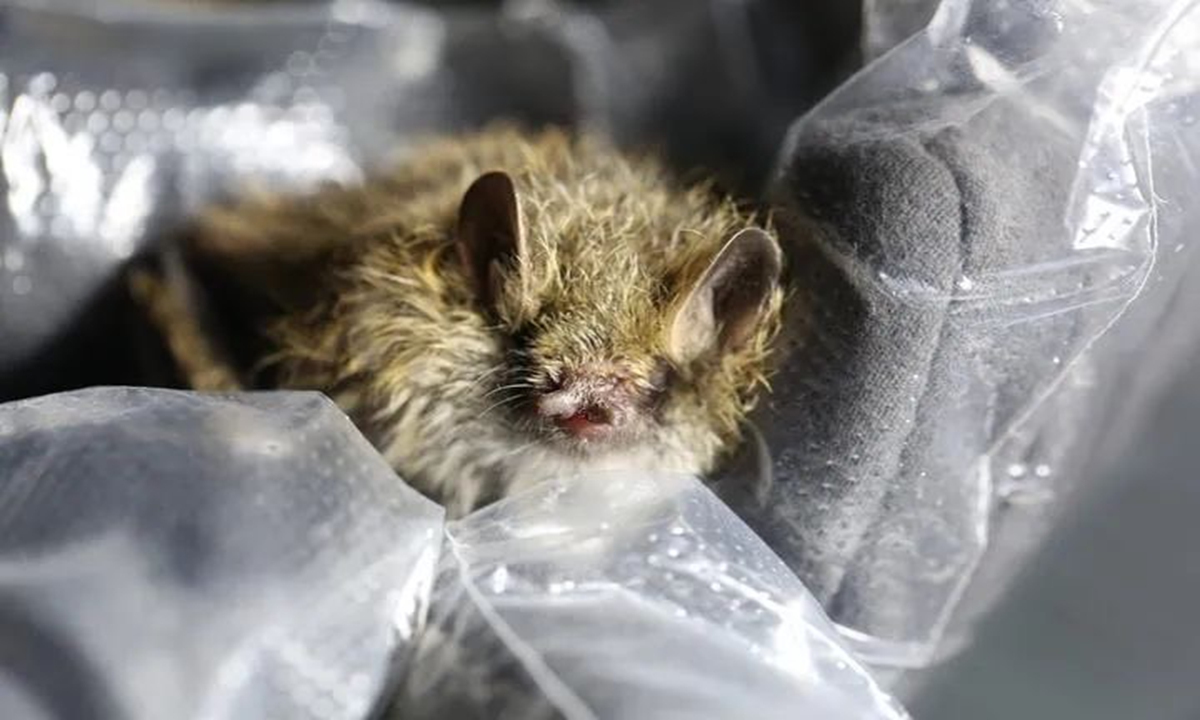
Tube-nosed Bat. Photo: Xinhua
Chinese scientists have unveiled a new species of Tube-nosed Bat in the Qinghai-Xizang Plateau in Northwest China's Qinghai Province, marking a milestone in the study of bat diversity in China, according to the report of Xinhua News Agency on Sunday.
Han Xuesong, a research fellow with the team at the Shan Shui Conservation Center as well as a doctoral student at Peking University, emphasized the importance of this discovery. He noted that understanding the migration and distribution patterns of bat species like the Tube-nosed Bat can provide crucial insights into how animals adapt to extreme environments, Xinhua reported.
Linda Wong, a deputy secretary-general of the China Biodiversity Conservation and Green Development Foundation, told the Global Times on Sunday that this new discovery is significant because high-altitude ecosystems are inherently fragile and susceptible to climate change and human activities.
"The discovery helps researchers understand how Tube-nosed bat species survive and adapt to high-altitude, extreme environments.," she noted.
The discovery was published in the Journal of Mammalogy on Wednesday. The research began in 2018 during a biodiversity survey along the Batang River, a tributary of the Yangtze River, in Yushu Tibetan autonomous prefecture in Qinghai, where researchers discovered a small male Tube-nosed Bat hibernating in a cave at 3,770 meters above sea level. The bat's size was noticeably smaller than that of known Murina species, prompting the team to conduct further investigations.
The Tube-nosed Bat exhibits distinct characteristics, including a forearm length of 31.34 milometers, and a total skull length of 14.14 milometers. Its ears are notably small and round, lacking any notches. The bat's dorsal fur has striking coloration, with a black base transitioning to golden brown at the tips. In contrast, the ventral fur is longer, deep black at the base, and grayish-white at the tips, showcasing the species' unique adaptations to its high-altitude habitat. Subsequent morphological and genetic analyses revealed significant differences between this Tube-nosed Bat and other known species, according to a report published in the Journal of Mammalogy on Wednesday.
The discovery is particularly noteworthy given its adaptation to the extreme conditions of the Sanjiangyuan region, often referred to as the "Three Rivers Source." This region is characterized by high altitudes, harsh climates, and low oxygen levels - conditions that challenge the survival of most species.
Han also noted that while most Tube-nosed Bats are found in warmer, more humid forested regions of Asia and Oceania, the Tube-nosed Bat thrives in a vastly different environment, underscoring the resilience and adaptability of this group of bats.
The Murina genus, which now includes 40 recognized species, has seen a remarkable increase in species descriptions over the past two decades. Prior to 2003, only eight Murina species were identified in China. However, enhanced survey efforts and advances in research techniques have led to the identification of 10 new species primarily from southern and southeastern China. Currently, a total of 21 Murina species have been recognized in China. These discoveries highlight the rich biodiversity of the region and the pressing need for further exploration.
Talking about the significance of the bat, Han told the Global Times on Sunday that this discovery reminds us that there might be many species that have yet to be identified in the Sanjiangyuan region. "Especially for bat species, the entire southwestern mountains and Qinghai-Xizang Plateau may be unexplored lands," Han pointed out.
In addition to the cognitive breakthrough, Han also attributed the new discovery to China stepping-up efforts in biodiversity protection.
"Thanks to the environmental policies and traditional culture of the Qinghai-Xizang Plateau, the habitats of bats have been well protected for years," Han added.
"Meanwhile, the new discovery also reflects that our conservation investment is no longer limited to a few notable species but covers a wider range of species," said Han.




